Description
Long Description:
The Otto Bot is an open-source, 3D-printed humanoid robot designed to walk, dance, and interact with its surroundings. It’s powered by a microcontroller (usually an Arduino Nano) and uses four servo motors to control the legs, allowing it to walk and move. The robot can be programmed to perform various actions, such as obstacle avoidance using an ultrasonic sensor, and it can also emit sounds through a buzzer and display signals through an LED. Otto Bot is a popular project in educational settings, helping students and hobbyists learn about robotics, 3D printing, and programming.
- Microcontroller (Arduino Nano): The brain of the Otto Bot is an Arduino Nano or any similar microcontroller. It controls the servos, reads data from sensors, and executes the programmed movements. The Arduino Nano is favored for its small size and ease of use, making it ideal for compact robotics projects.
- Servo Motors: The robot is driven by four servo motors, which control its legs. Two servos are used for forward and backward movement, and two others allow the robot to turn or sway, giving it the ability to walk, dance, or perform other complex movements. The servos are connected to the microcontroller and are programmed to operate in specific sequences to achieve different types of motion.
- Ultrasonic Sensor (Obstacle Detection): An ultrasonic sensor, typically an HC-SR04, is mounted on the Otto Bot’s head to detect obstacles in its path. The sensor emits sound waves and measures the time it takes for them to return, allowing the robot to detect objects and avoid collisions. This enables the robot to interact with its environment, such as turning away when it detects an obstacle.
- Buzzer (Sound Effects): A buzzer is included in the Otto Bot for sound effects. The robot can produce beeping sounds, melodies, or other audio signals, making it more interactive and engaging. The buzzer can also be used for alerts or feedback during obstacle detection or when performing certain movements.
- LED (Visual Feedback): An LED is often included to provide visual feedback. It can blink or change color to indicate the robot’s status, such as showing that it is powered on, in standby, or actively avoiding obstacles. This adds another layer of interaction for users.
- 3D-Printed Body: One of the standout features of the Otto Bot is its customizable, 3D-printed body. The robot’s shell is designed to house all the components, including the servo motors, microcontroller, and sensors. The body can be printed using a basic 3D printer, and users can customize it by changing colors or modifying the design to fit their needs.
- Power Supply: The Otto Bot is typically powered by a Li-ion battery or AA batteries, which provide sufficient power for the microcontroller, sensors, and servos. The power source is placed inside the robot’s body, and a switch is used to turn the robot on and off.
- Programming (Block-Based or C/C++): The Otto Bot can be programmed using block-based environments like Otto Blockly, which is ideal for beginners, or traditional programming languages like C/C++ through the Arduino IDE. Users can program the robot to walk, dance, avoid obstacles, or interact with its environment in different ways, making it a versatile platform for learning and experimentation.
How It Works:
- The Otto Bot stands on its four servo-driven legs.
- It can be programmed to perform specific movements, such as walking forward, turning, or dancing by controlling the servos in coordinated sequences.
- The ultrasonic sensor continuously scans the area for obstacles. When an object is detected, the microcontroller calculates the distance and makes the robot stop or change direction.
- The buzzer provides audio feedback, and the LED gives visual signals.
- The robot can be further enhanced with additional sensors or actuators for more complex behavior.
Applications:
- Educational Robotics: Otto Bot is a popular project in classrooms and workshops, teaching students about electronics, programming, and mechanical design.
- DIY Robotics: It’s an ideal project for hobbyists who want to create their own walking robot, experiment with 3D printing, or learn more about microcontroller-based robotics.
- Interactive Toys: Otto Bot can be used as a fun and interactive robot that dances, walks, and avoids obstacles, making it a great toy or gift.
- Robotics Competitions: With simple modifications, Otto Bot can participate in robotics challenges, performing tasks like obstacle avoidance, dancing, or navigating mazes.
Advantages:
- Customizable Design: The 3D-printed body allows for easy customization and personal design touches, making the robot unique to each user.
- Educational Value: It introduces key concepts of robotics, such as sensor integration, motor control, and programming, in a hands-on and engaging way.
- Open-Source Community: Otto Bot has a strong open-source community, offering a wealth of resources, tutorials, and modifications for users to explore and build upon.
- Interactive Features: With its ability to detect obstacles, emit sounds, and display visual signals, Otto Bot provides a highly interactive experience for users.
In summary, the Otto Bot is a beginner-friendly, customizable robot that can walk, dance, and interact with its environment using servo motors and sensors. It’s a great educational tool for learning about robotics, 3D printing, and programming, and it can be easily customized to fit a variety of projects and applications.
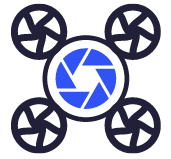

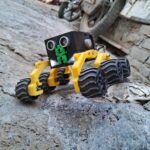
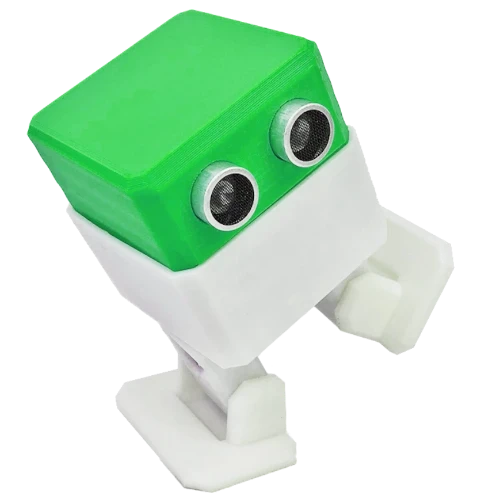

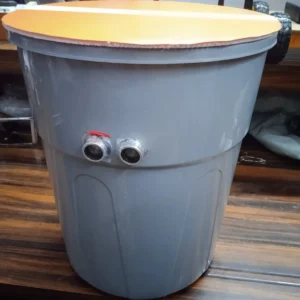
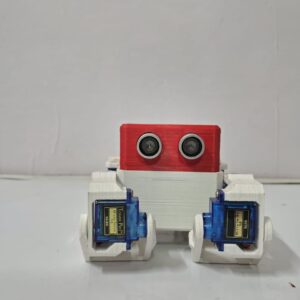
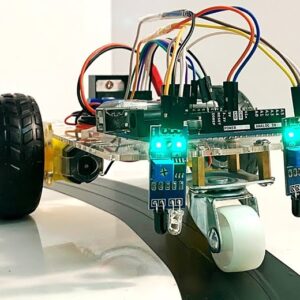
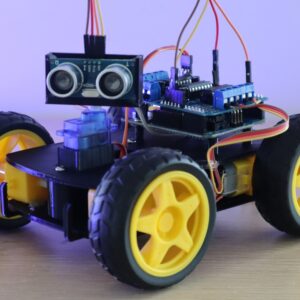
Reviews
There are no reviews yet.